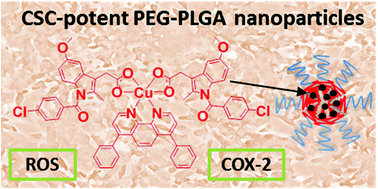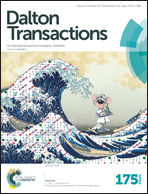The breast cancer stem cell potency of copper(ii) complexes bearing nonsteroidal anti-inflammatory drugs and their encapsulation using polymeric nanoparticles†
Abstract
We report the cancer stem cell (CSC) potency of a novel series of copper(II)-phenanthroline complexes bearing nonsteriodial anti-inflammatory drugs: naproxen, tolfenamic acid, and indomethacin (2a–3c). Two of the complexes, 2a and 3c, kill breast CSC-enriched HMLER-shEcad cells (grown in both monolayer and three-dimensional cell cultures) to a significantly better extent than salinomycin, a well-established CSC toxin. The most potent complex in the series, 3c induces its cytotoxic effect by generating intracellular reactive oxygen species (ROS) and inhibiting cyclooxgenase-2 (COX-2) activity. Encapsulation of 3c using biodegradable methoxy poly(ethylene glycol)-b-poly(D,L-lactic-co-glycolic) acid (PEG–PLGA) copolymers at the appropriate feed (5%, 3c NP5) enhances breast CSC uptake and reduces overall toxicity. The nanoparticle formulation, 3c NP5 selectively kills breast CSCs over bulk breast cancer cells, and evokes a similar cellular response to the payload, 3c. To the best of our knowledge, this is the first study to demonstrate that polymeric nanoparticles can be used to effectively deliver CSC-potent metal complexes into CSCs.


 Please wait while we load your content...
Please wait while we load your content...